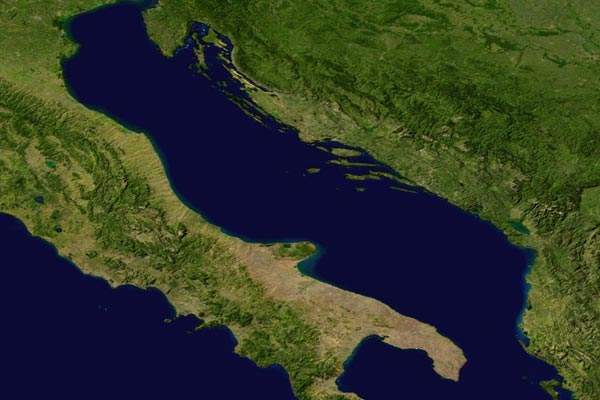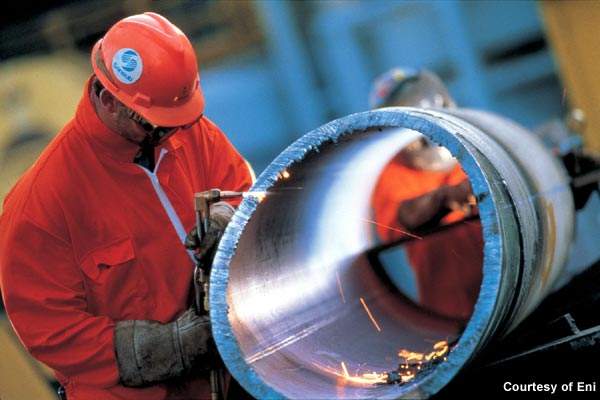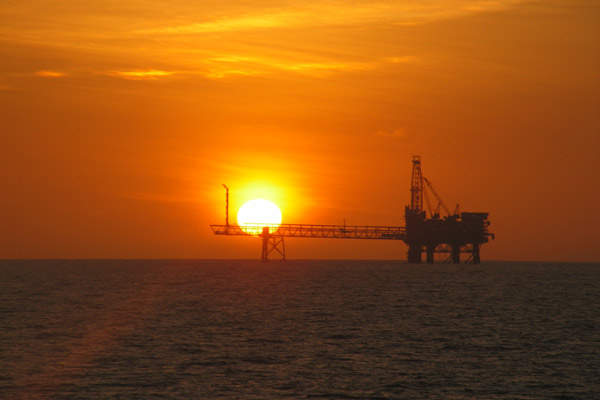The Guendalina Gas Field is operated by Eni, which has an 80% interest, and Mediterranean Oil & Gas (MOG), which holds a 20% interest. Located around 16 miles offshore in the Adriatic Sea, the field is situated on the D37 AC-FR concession at a water depth of 66ft and a reservoir depth of 9,843ft.
Italy’s Ministry of Economic Development approved and awarded the project’s production concession in January 2010. The project received Environment Impact assessment approvals from the Italian Ministry of the Environment in April 2009.
The development activities are expected to begin in February 2010. These will include the platform installation at a water depth of 20m, offshore Ravenna, Italy.
The production platform will be constructed and installed by the end of 2010. Two wells will be drilled in the first six months of 2011.
Reservoir geology
The reservoir over the project lies at the Porto Garibaldi Formation, a Pliocene turbiditic sandstone. The reservoir is classified into four sandstone beds based on varying thicknesses in the range of 5 to 20m and porosity of 22-23%.
The four levels are J1, J2, I1 and J3. The lowest reservoir sandstone, J3, was gas-bearing and overlapped the bottom in the Guendalina-1 exploration well and the Guendalina-1 DirA appraisal well. The J1, J3 and I1 levels carried gas in an up-dip sidetrack.
Guendalina reserves
The proven and probable reserves of the field are estimated to be 2P reserves, as per SPE / WPC Standard, and 22bcf, according to Sergio Morandi, an independent geologist certified by MOG. As per Eni, gas production is expected to be 20mcf per day.
In 2005, RPS Energy presented an estimate for the field that its contingent gas resources likely to be 455mscm. RPS’s high estimate is 851mscm. Eni estimates that the field will produce 142mscm during the first year of its full production.
Field development
The project began with the discovery of the Guendalina-1 exploration well by Eni in 1998. The gas field was appraised by the Guendalina-1 DirA appraisal well. The well was drilled 1,148ft deep north east of the discovery well.
To control costs, the project is to be developed as a subsea tie-back to the Amelia production platform over the Tea gas field, which is owned and operated by Eni. The Tea development plan also involved development of Guendalina as a subsea tie back to the Tea field.
The Guendalina project entered its development phase during 2006 when the development plan for the Tea field received environmental approval. Eni then started preparing its feasibility studies and budgets to ensure approval of the Guendalina development.
Eni is still evaluating the required capital expenditure for the field’s development. The review analysis resulted in higher costs involved compared with the initial estimate made by Eni.
MOG entered into an €18m credit facility with Bank of Scotland in March 2008. Out of this, €10m is to be used for developing the Guendalina field.
Guendalina production
Production from Guendalina is expected to start by June 2011, trebling MOG’s annual rate of gas production.
As per new Health, Safety and Environment regulatory requirements, the proposed development facilities will initially require an upgrade. Further, the Ministry of Environment ordered the installation of a monitoring system for measuring any subsidence that would be caused during gas production.
Together, the upgrade and monitoring system installation will increase the capital expenditure required for the project. The additional cost will be financed by increasing the dedicated credit facility that MOG has with its bankers.
MOG is also developing the Ombrina Mare concession, an offshore field. The company has 17 production concessions and 13 exploration permits in Italy.










